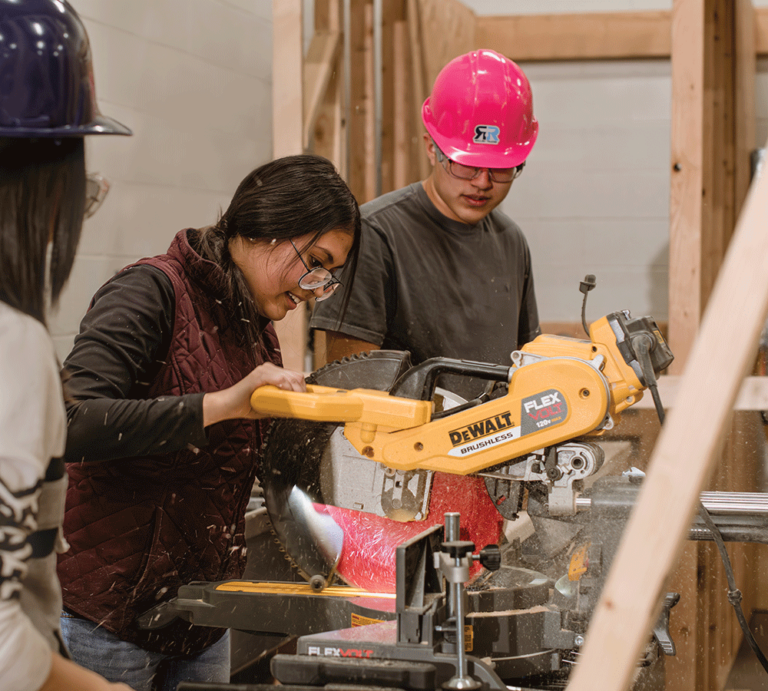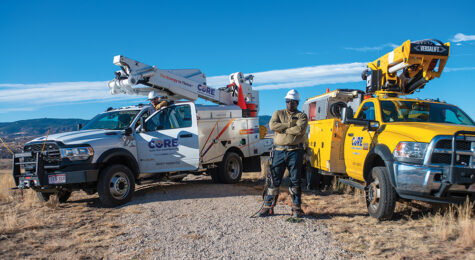New Opportunities in Adams County, CO
Adams County is leading the charge for students entering tech-ed careers.

In the 2020-21 academic year, 178,841 students participated in career and technical education (CTE) in Colorado, the Perkins Collaborative Resource Network reports. The Adams County region is a testament to the increasing growth of CTE programs in public schools, as well as the demand from those interested in trade industries.

A Space for All
The 27J School District in Brighton, for example, is breaking ground on a 56,000-square-foot STEM Learning and Career Technical Education Center. The project is set to be completed in 2023. When finished, it will offer opportunities in various trades.
“Many districts build a single CTE center where kids bus in every day and only 5 to 7% of the district’s population will get the education,” says Paul Francisco, director of postsecondary education and workforce readiness at 27J Schools. “We want to offer current tech-ed to as many of our students as we can and ensure that our best and most popular programs are accessible.”
27J Schools, which has several fast-growing high school business programs and some of the most respected instructors in the country teaching courses, now offers the Careers in Construction program throughout all of its high schools.
“We’ll end with 15 programs at the high schools – generally in STEM, computer science and engineering, and medical careers,” Francisco says. “We’ve always sort-of danced around hospitality, mostly because we’ve never had commercial kitchens, but we’re adding those, too.”
Francisco says getting into the programs right now for students is “kind of like the Hunger Games” and is seniority-based. But the hope is that, with the new facility and space, the process will look more like a student simply raising a hand.
“We sometimes refer to the ‘Three Es’ for postsecondary education options: furthering education, enlisting in the military or being employed in the community right after high school,” Francisco says. “But we weren’t sure that we wanted to separate students. We want every kid to be able to take construction trade classes and get college credit, or at least feel like they don’t have to choose between that or standard academics.”
Westminster Public Schools is another school district offering CTE, and through a project called “Ranum Reimagined,” it’s renovating Ranum Middle School to create an expanded program. The facility is expected to house existing CTE programs and add pathways to positions such as pharmacy technicians, phlebotomists, certified nursing assistants, sports medicine and physical therapists.

Construction Careers
Careers in Construction (CIC) works with high schools across Adams County to help students jumpstart their careers in the industry.
“Careers in Construction began in 2015 when it partnered with Associated General Contractors (AGC) of Colorado, says Sydney White, communications coordinator for CIC.
“The industry took a look and saw the workforce was aging out and didn’t have a pipeline for new people entering, nor was it being taught in schools,” White says. “Now, CIC is in 48 schools teaching 2,470 students.”
White says the key difference between CIC and other tech-ed programs is that industry professionals come in and work directly with students; it’s a network of people who want to be involved in the workforce and help students establish their careers. So far, CIC has employed 693 students.
“The idea is that not every student is going to pursue a two- or four-year degree, so we have resources for students who don’t,” says Lisa Seaman, workforce manager at the Construction Education Foundation, through which CIC is run.
“Or, we have apprenticeships for those who want to work,” she says. “Adams County has shown the most growth so far and has some impressive instructors who are very open to directing the program in a way that supports the students.”
Seaman applauds Colorado’s general support from higher levels in districts that welcome industry leaders to teach in schools.
“The admins really get it. We’re targeting students who feel left out, like those who aren’t going to college, and they’re learning about how it’s not simply turning on a light switch – there’s human life behind that technology.”

Building the Workforce
To learn more about CIC, we sat down with Bryan Cook, chapter operations director of AGC, who gave us the 4-1-1 on the program.
How did AGC Colorado come to partner with CIC?
Around 2015, AGC was strategic planning and started a website called Build Colorado that featured a job board and educated folks on opportunities in construction. Most jobs needed three to five years of experience, but we realized that many people didn’t have that.
We needed to break barriers and make the industry more accessible, which resulted in Construction Careers Now, a four-week, pre-apprenticeship program with a hiring event at the end. Then, with the board, we formed the Construction Education Foundation (CEF) that focuses on workforce development. Through that, we started Careers in Construction.
What prompted the need for outreach to younger audiences?
AGC is made up of around 700 contractors with an average apprenticeship age of 28. We refer to it as “the lost decade,” as kids will leave traditional high schools and enter into careers that don’t work out, then seek careers in construction later in their 20s.
Through CIC, students learn over 160 hours’ worth of material in a packed core of classes. They can then take additional modules to ultimately specialize in one trade. It helps prepare them for construction careers and accelerates them, saving time typically spent in traditional degree or apprenticeship programs.
What do apprenticeship programs look like?
We use a National Center for Construction Education & Research (NCCER) curriculum, and students come in once a week while also employed by industry companies that pay for them to attend. Depending on what education the student has already completed, it can take as little as one year to complete the apprenticeship. They’ll still need two years of on-the-job training.
The need in construction is huge right now, so these individuals will come out with an associate degree and (nearly) 100% placement. We currently have 185,000 construction workers in Colorado, but by 2027, the state is projecting a need for 220,000, per the Bureau of Labor Statistics. The need is so great that there are plenty of opportunities to really elevate your pathway as you grow in the field.
Get to Know Adams County
Want to learn more about living and working in Adams County, CO? Check out the new edition of Livability Adams County Region, Colorado.



